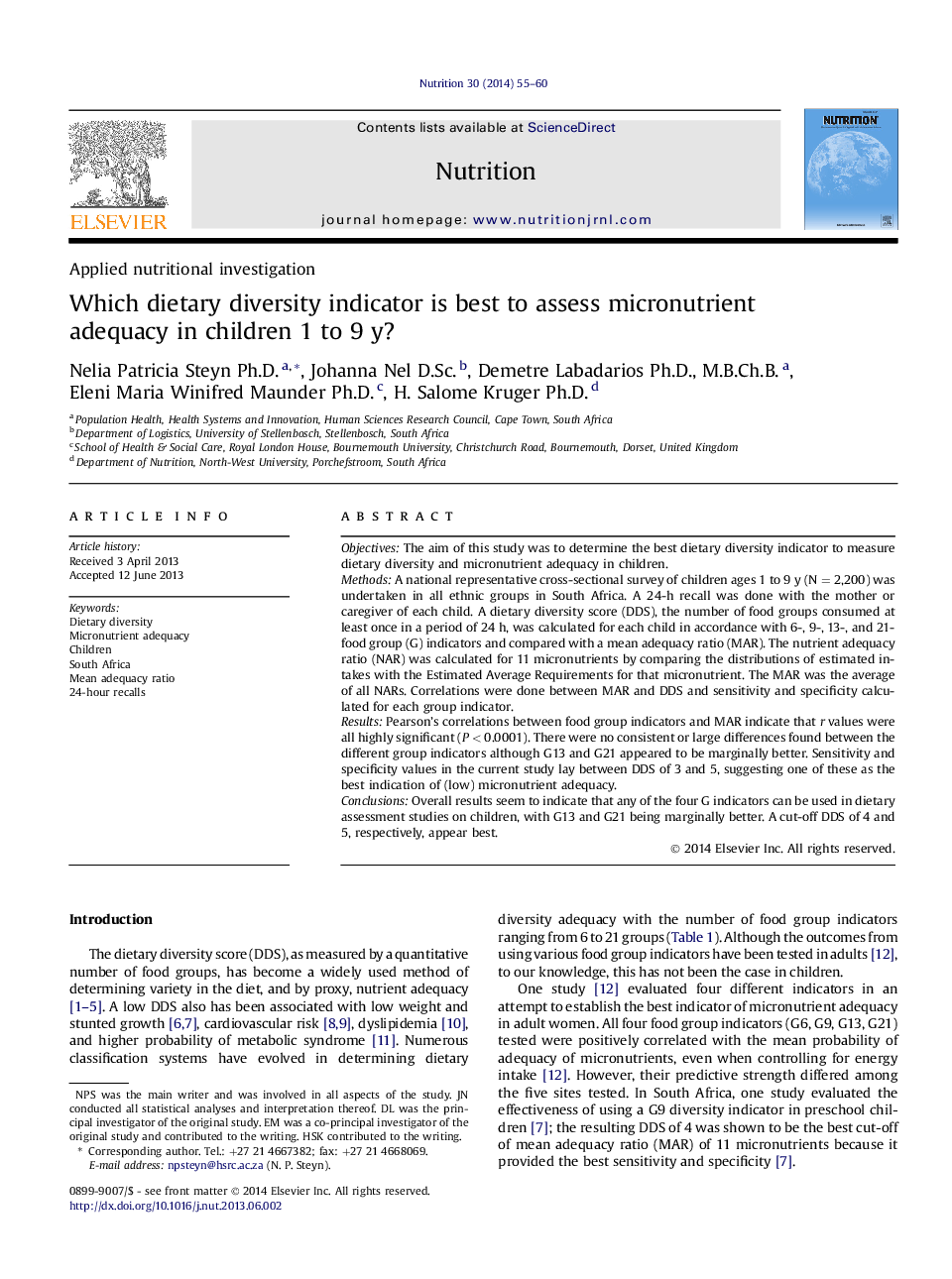| کد مقاله | کد نشریه | سال انتشار | مقاله انگلیسی | نسخه تمام متن |
|---|---|---|---|---|
| 6089738 | 1208551 | 2014 | 6 صفحه PDF | دانلود رایگان |
ObjectivesThe aim of this study was to determine the best dietary diversity indicator to measure dietary diversity and micronutrient adequacy in children.MethodsA national representative cross-sectional survey of children ages 1 to 9 y (N = 2,200) was undertaken in all ethnic groups in South Africa. A 24-h recall was done with the mother or caregiver of each child. A dietary diversity score (DDS), the number of food groups consumed at least once in a period of 24 h, was calculated for each child in accordance with 6-, 9-, 13-, and 21-food group (G) indicators and compared with a mean adequacy ratio (MAR). The nutrient adequacy ratio (NAR) was calculated for 11 micronutrients by comparing the distributions of estimated intakes with the Estimated Average Requirements for that micronutrient. The MAR was the average of all NARs. Correlations were done between MAR and DDS and sensitivity and specificity calculated for each group indicator.ResultsPearson's correlations between food group indicators and MAR indicate that r values were all highly significant (P < 0.0001). There were no consistent or large differences found between the different group indicators although G13 and G21 appeared to be marginally better. Sensitivity and specificity values in the current study lay between DDS of 3 and 5, suggesting one of these as the best indication of (low) micronutrient adequacy.ConclusionsOverall results seem to indicate that any of the four G indicators can be used in dietary assessment studies on children, with G13 and G21 being marginally better. A cut-off DDS of 4 and 5, respectively, appear best.
Journal: Nutrition - Volume 30, Issue 1, January 2014, Pages 55-60
